Being in a motor vehicle accident is already often shocking and stressful, but determining what happens if the at-fault driver’s insurance won’t pay can make it even more challenging. It shouldn’t be that way. If you’ve been in a collision that wasn’t your fault, expecting the at-fault driver’s insurance to pay your damages is reasonable.
Consult a Grafton car accident lawyer to receive a free case evaluation to determine a legal strategy to recover compensation for your losses. There are no upfront costs to retaining an auto accident attorney who works for contingency (most do).
Reasons the At-Fault Driver’s Insurance Company Refuses to Pay After a Collision
There are a few viable reasons for insurers to deny an insurance claim. For example, in the cases of lapsed policies or if a claim is a legitimate fraud, however, insurance companies are notorious for refusing to pay unrepresented injury victim claims for various other reasons, including:
Disputing Accident Liability
Insurance companies conduct their own investigations into accident claims and often conclude their policyholder wasn’t liable for the accident. They may argue against partial or total liability with your insurer and other liable party insurers to minimize or deny your claim.
Disputing the Severity of Injuries
Unfortunately, it’s common for liable insurance companies to contest the severity of injuries an accident victim suffers following a collision. They may allege the injuries are not as severe as you claim. Additionally, insurers may deem medical and rehabilitation treatment received as unnecessary or excessive for your injuries.
Claim Exceeds Coverage
Insufficient coverage is a frustrating reason an insurance company may refuse to pay your injury claim. If the at-fault driver is underinsured and your injuries and damages exceed the amount of their coverage, their insurer may refuse to pay your claim.
Policy Exclusions
Insurance policies include specific exclusions that dismiss them from liability if a policyholder causes an accident. While different insurers have individual policy terms, standard exclusions include:
- Hitting Your Own Vehicle —Liability insurance has no obligation to cover damages policyholders inflict on their vehicles. You need to carry comprehensive or collision coverage for those damages.
- Driver Exclusion —If the insurance company writes a clause into the policy excluding a high-risk driver in the same household as the policyholder and that driver causes the accident, the company is not liable to pay damages.
- Family Member Exclusion —Insurers in some states are allowed to (and do) include a clause that prevents family members from committing insurance fraud. The liability clause states that if two family members are in the insured vehicle and are involved in an accident, the insurance company will not pay out damages on a claim filed by the passenger.
- Using a Vehicle for Business—Picking up a side gig, such as delivering pizzas or helping people move through apps like TaskRabbit with personal vehicles, allows an insurer to deny coverage for using the vehicle for business purposes without carrying adequate business liability insurance.
- Using a Vehicle to Drive for a Rideshare Company —Driving for rideshare apps, such as Uber, Lyft, UberEATS, and Door Dash, without adequate rideshare insurance runs the risk of voiding liability coverage in accidents.
- Intentional Acts —If a policyholder was driving recklessly, such as racing, performing stunts (donuts in the parking lot or snow), acting in a fit of road rage, or otherwise acting recklessly behind the wheel, an insurer will deny your claim.
- Unlisted Vehicle Exclusion—If a policyholder has multiple vehicles but fails to include them on their policy and an unlisted vehicle causes an accident, the insurance company is not liable to pay damages.
Auto insurance companies also deny claims with act-of-God exclusions, which exclude coverage for damages caused by natural events and disasters, such as hail, flooding, hurricanes, earthquakes, and tornadoes. Comprehensive insurance generally covers damages not caused by a crash with another vehicle.
Insufficient Evidence to Prove Negligence
Insurance companies require clear and substantial evidence of their policyholder’s negligence. If an insurer deems the evidence inadequate to establish fault, it will deny your injury claim.
Pre-Existing Conditions

If a liable insurance company gets its hands on your medical records, it may dissect them for any prior injury or condition. An insurer does this to claim that pre-existing conditions are responsible for your symptoms and injuries and not the collision.
Never give a liable insurance company access to your medical records. They require written consent without a subpoena or court order, which will only likely be resorted to in highly contentious motor vehicle accident lawsuits.
Consult a lawyer if liable insurers are pressuring you to release your medical records. They can object to such requests or subpoenas and seek a protective order from the court that limits your medical record disclosure.
Contact an attorney immediately if you’ve already given written consent for the liable insurance company to obtain your medical records. They can begin to prepare a strategy to counter what may follow.
Understanding Insurance Company Bad Faith Tactics
Another reason at-fault driver’s insurance won’t pay injury victim’s claims for compensation involves bad faith tactics. Examples of bad faith tactics insurance companies employ are as follows:
- Intentionally misrepresenting policy claim language to delay or deny paying injury victims.
- Unreasonably denying or failing to make payment on a valid injury claim.
- Delaying payment of an injury claim without a valid reason.
- Failing to investigate accident claims before delaying or denying them.
- Refusing to settle a reasonable insurance claim.
- Seriously undervaluing insurance claims to minimize company payouts.
- Sending insultingly low offers that may not cover all damages or only cover the cost of copays.
- Unnecessarily requiring excessive documentation.
- Making threatening statements.
Another example of bad faith practices is when an insurance company fails to provide a legal defense for their policyholder in a valid claim. An example is a homeowner filing a claim through their homeowner insurance after someone slips and falls on their property. They rightfully expect their insurer to cover damages and provide legal defense.
However, if the insurance company denies the claim under the guise of the accident falling outside of their policy coverage, it leaves the policyholder to handle their own legal defense and potential compensation payout on a valid claim —this is known as refusal to defend and is a bad faith tactic that victims should speak to an attorney about.
What to Do if an At-Fault Driver’s Insurance Won’t Pay
You may still have options to recover compensation if an at-fault driver’s insurance won’t pay. Start by gathering additional evidence, filing an appeal with the liable insurer, and retaining a car accident attorney to represent your legal right to financial compensation.
Gather Additional Evidence
Gathering additional evidence can be helpful to your case, especially if your claim was denied due to insufficient evidence. Types of evidence that can help prove negligence in a motor vehicle accident include:

- Photographic Evidence of Accident Scene—Photos from the accident scene can provide concise visual evidence of the collision that may help investigators understand how the crash occurred. For example, vehicle positions, traffic signs, road conditions, tire or skid marks, and debris from the accident can be insightful for proving negligence and liability.
- Photographic Evidence of Injuries —Pictures that clearly indicate the severity of your injuries immediately following a car accident are also helpful for establishing a need to pay damages.
- Video Footage —Video evidence captured by surveillance cameras, dashcams, doorbell cams, or bystanders’ cellular phones is invaluable to proving negligence in your claim. Video footage may capture the accident’s sequence of events, driver behaviors, and road and weather conditions.
- Vehicle Damage Reports—The information in vehicle damage reports can help insurers and courts better understand the accident and liability. These reports detail the location and extent of the vehicle damage that can demonstrate fault. For example, significant damage to a vehicle’s trunk likely indicates it was involved in a rear-end collision with the at-fault driver.
- Police Report and Witness Statements —A police report documenting the scene with attached eyewitness statements can help prove you have a valid insurance claim. Witness statements from bystanders who saw what happened may provide useful information that photos or videos may not capture. For example, if the at-fault driver was driving recklessly, speeding, and weaving in and out of traffic before the crash. Witness testimonies strongly influence proving negligence and a duty to pay compensation.
Obtaining all of this evidence is much easier with the help of a car accident lawyer. Investigating your own case, tracking down potential witnesses, and requesting video surveillance footage can be overwhelming, especially when you need to focus on recovery.
An attorney may also have legal access to additional evidence you don’t, such as expert testimony, accident reconstruction reports, and GPS and cell phone records of the at-fault driver.
File an Appeal
Insurers generally have an appeals process if an injury claim is denied. Submit your appeal contesting the denial and including the additional evidence you’ve collected. Many denied claims are appealed, and some are successfully overturned for reasons including bad faith tactics.
Retain a Car Accident Attorney
The sooner you retain legal counsel, the better. Most auto accident attorneys work for contingency, so there are no upfront or ongoing costs to hire one. They represent cases like yours all of the time and can be invaluable to your success in securing financial compensation.
How an Attorney Will Help if an At-Fault Driver’s Insurance Won’t Pay
The Insurance Research Council reports that unrepresented injury victims receive significantly lower net payments than those represented by lawyers. With no upfront costs, it makes no sense not to obtain legal counsel.
A lawyer will help by reviewing your denial letter, writing a letter to the liable insurer informing them of your intent to collect, finding alternative options for compensation, gathering additional evidence, valuing your case, negotiating your settlement, and representing you at trial.
Review the Denial Letter
Your attorney will review the denial letter to identify and understand their reported reasons for refusing to pay your claim. The letter generally includes critical information about the appeals proves and other filing deadlines.
Write a Letter to the Liable Insurance Company
After reviewing your denial letter, your lawyer will write a letter to the liable insurance company. They will explain how their refusal to pay is unacceptable and clarify their commitment to defending your right to fair compensation until it is released. This letter usually signals to the insurer that they cannot get away with denying the claim while initiating a check or the first round of negotiations.
Finding Alternative or Additional Options for Compensation
There may be alternative or additional options for recovering compensation for damages incurred in your accident. Options they may explore include:
- Collision —If you carry collision coverage, your insurer may assume the cost of repairing or replacing your vehicle after an accident.
- Personal Injury Protection (PIP) —If your policy includes PIP coverage, your insurer may assume the cost of medical expenses, disability and rehab costs, lost income, household services, funeral expenses, and a death benefit to the surviving family in the event of wrongful death.
- Uninsured Motorist (UM) —Uninsured motorist coverage usually pays for claims that a liable insurer refuses to pay your damages.
- Rideshare Liability Insurance —If the at-fault driver’s insurance doesn’t pay because the policyholder was driving for a rideshare program, you may recover compensation from the company’s third-party liability insurance. Uber and Lyft both extend coverage to drivers who are online and available for a trip —or en route or on a trip.
Having these coverages doesn’t automatically mean you’ll be issued a check for the minimum or maximum policy amount. Unfortunately, many of these alternative methods of obtaining compensation alone don’t guarantee a sum large enough to cover damages for accident victims with severe injuries, such as permanent disability and those requiring long-term care.
Your lawyer will investigate all avenues. While these options to recover compensation don’t negate the duty of the liable insurer to pay you, they may alleviate the immediate financial burden the collision may impose.
Gathering Additional Evidence That Helps Prove Negligence and Liability
Your attorney will thoroughly investigate your claim, seeking additional evidence to cement liability. Additional evidence they may locate is as follows:

- Traffic citations issued to the at-fault driver relating to the accident
- Cell phone records of the at-fault driver at the time of the accident
- GPS data of the at-fault driver at the time of the accident
- BAC and toxicology reports of the at-fault driver
- Incriminating social media posts
- Expert witness testimony stating the at-fault driver’s negligence
Accident reconstruction reports are another valuable resource car accident lawyers use to establish liability. Accident reconstruction reports are diagrams from specialists who analyze collision details to determine the cause of your crash.
Case Valuation
Valuing the losses in your cases involves calculating your economic and non-economic damages. Standard compensation types a lawyer will seek include:
- Medical, rehabilitation, and disability costs
- Income losses
- Vehicle-related damages or replacement
- Pain and suffering
- Emotional distress
- Psychological trauma
Families seeking damages in a wrongful death claim that the at-fault driver’s insurance won’t pay for may also seek damages, including final arrangement expenses, loss of financial support, loss of consortium, loss of parental guidance, and loss of inheritance.
Negotiating a Settlement
Finally, your attorney will demand that the liable insurers pay the damages in your injury claim. They may exchange a few rounds of negotiations before agreeing on a settlement. Your lawyer will discuss all offers and advise you on taking or rejecting them.
Preparing for and Litigating Your Case in Court

Jeff Robinette, Car Accident Lawyer in Grafton
Most claims are ultimately settled outside of the courtroom. However, if your lawyer and liable parties cannot agree on settlement terms, they will prepare your case for litigation. Litigation includes filing the lawsuit, going through the discovery phase, presenting the evidence of your case to the judge and jury, calling expert witnesses, and giving closing arguments.
Schedule a free consultation with a Grafton personal injury lawyer to discuss what happens if the at-fault driver’s insurance won’t pay your claim. After learning the circumstances of your case, they will be better equipped to develop a legal strategy to recover financial compensation.
Jeffery Robinette was admitted to practice law in 1991 and is licensed in all levels of state and federal trial courts in West Virginia. Mr. Robinette is also licensed in all state and federal appeals courts in West Virginia and the United States Supreme Court. As a National Board Certified Trial Attorney who has handled hundreds of motor vehicle, injury, and construction defect claims and a leading author on insurance claims settlement issues and difficulties in West Virginia, Jeff Robinette is uniquely qualified to represent your best interest.





